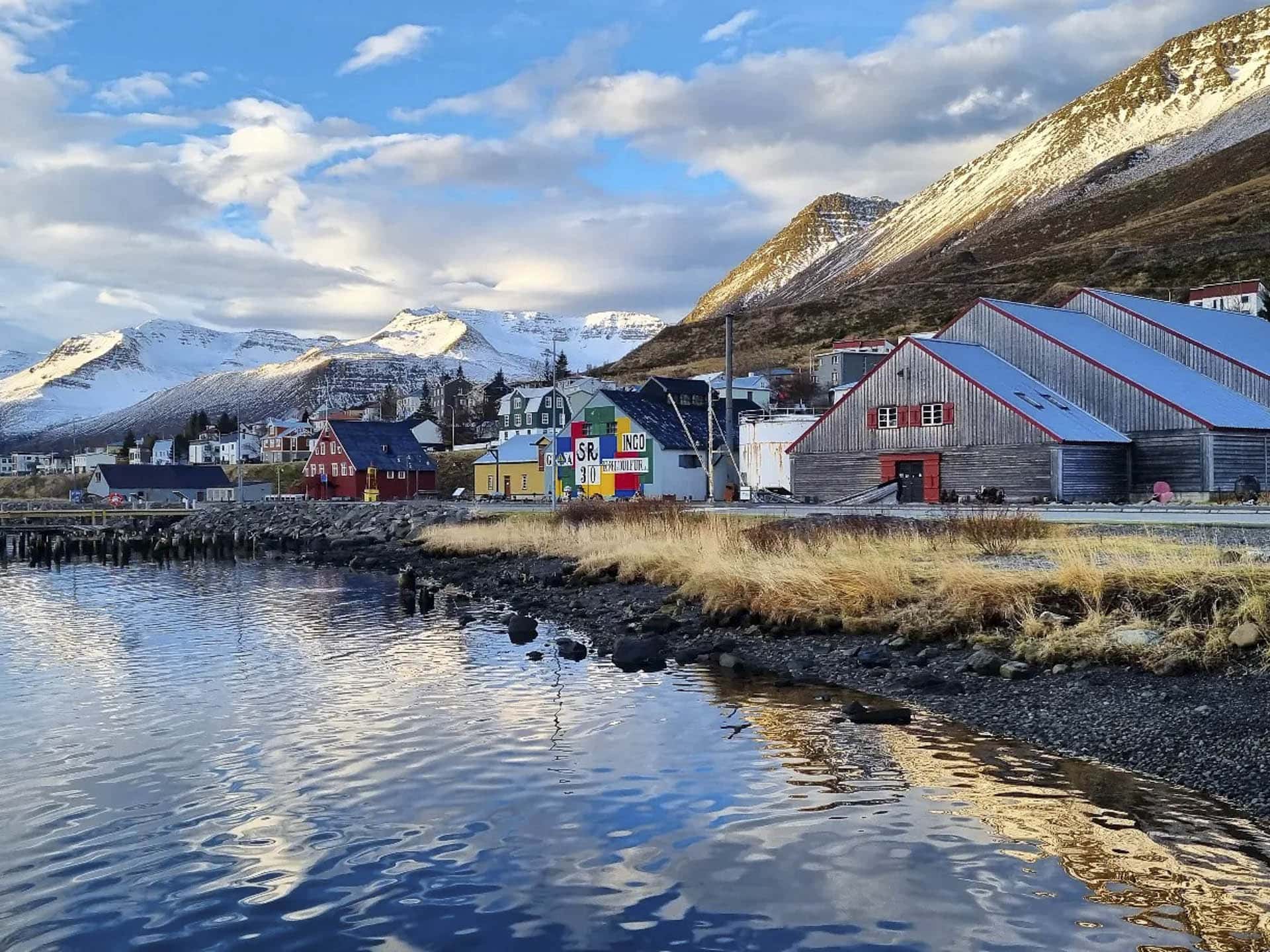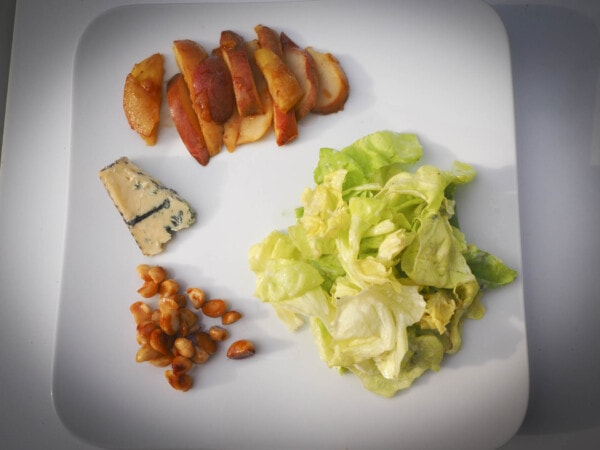Herring used to be called Iceland’s “silver of the sea,” the country’s gold, the island’s platinum, its “diamonds of the deep.” At one time, the country’s northernmost town of Siglufjörður was the most important place in the world for herring—so many people rushed here to be part of the frenzy that it became known as the “Atlantic Klondike.”
According to some sources, in its golden years, herring from Siglufjörður contributed 50% of Iceland’s export income. Mid-summer when the fleet was in, the town’s population quadrupled to 10,000 workers packing the streets and docks. “There were so many docks in the harbour that you had to travel a kilometre and a half to get from the first one to the last. In fact, laid end-to-end Siglufjörður’s docks would have stretched well over six kilometres,” says a brochure.
The boom ended, abruptly, in 1968. The huge schools of herring dropped to nothing.
But the story has a silver lining. The Herring Era Museum that the townspeople (population ~1,300) have developed is nothing short of remarkable.
Magellan and I arrived on a Saturday afternoon in September, with not much more than an hour to see the comprehensive museum before it closed at 5pm. Even though we’d read it had won the Luigi Micheletti award, given annually to a museum “that exhibits a compelling narrative of its society,” we were awestruck by what’s been accomplished.
This is a people’s museum. An experiential immersion into the summer life of the people in Siglufjörður during the herring era.
When the herring industry was in full gold-rush swing (1903-1968) in Sigló, the boomtown’s nickname, more than 120 companies operated here, including nine separate factories that processed herring into saltfish, oil, flour, livestock feed and fertilizer.
What surprised us was that most of the workers were “Herring Girls.”
About 50-60 herring girls worked at each of the 23 salting stations. Imagine the camaraderie as they chopped off fish heads, filleted the herring and tossed the guts into the sea, packed the fish into barrels and dosed them with copious amounts of salt.
Paid by the barrel, (often earning more than men working the docks), the girls wagered on who could work fastest. “They would pack three to four barrels per hour throughout a 24-hour shift and then could go home and rest,” said Anita Elefsen, director of the Herring Era Museum told the BBC. En mass during a summer, they jammed herring into as many as 30,000 barrels.
After filling a barrel, a herring girl received a token that she’d tuck into one of her boots, exchanging her tokens for a receipt at the end of the workday, and trading in the receipt for cash once a week.
It wasn’t all fun and games. The women worked outside, where, even in August, the temperature averaged only 8.6 °C! Sometimes, they worked through the night.
As Elizabeth Heath explains in Smithsonian Magazine, herring girls helped initiate the gender equality that distinguishes Iceland today (the country has ranked #1 for a baker’s dozen of the last consecutive years according to a World Forum Index):
A herring girl who worked quickly might earn as much as $10 a day—money that she could spend, save or send back home. Modest as it may seem, this accumulation of wealth helped eradicate exploitative labor practices of the past and drive Iceland’s eventual independence from Denmark, which had long regarded the island as a sort of backward colonial outpost… Herring girls unionized as early as the 1920s and held their first successful strike for higher wages in 1925.
In the platinum decades of the 1920s and 1960s, workers could go for a drink at one of the dozens of bars or soda fountains, dance the night away at several halls, and choose between multiple screenings of a movie.
Industry sailed away when the schools of herring in the North Atlantic disappeared. The population of Sigló dropped in half. North Atlantic gales levelled abandoned wooden structures, which led the fire department to burn many of those still standing as a precautionary measure. Soon, few historical buildings were left.
But before the firemen orchestrated controlled burns, the practical people of Sigló salvaged a whole lot of stuff—from barrels to bunk beds to boats—amassing enough to fill ten buildings to the rafters.
In the 1980s, a group of volunteers tried to get the last building, a fish factory known as the Boone House, to be declared an historic site. (Three decades earlier before the herring industry collapsed, a consultant from Reykjavik had been hired to look at building a town museum.) Nothing came of either request.
So, when the first floor of the Boone House rotted, the volunteers took charge. They formed a non-profit, built a new foundation for the house thirty metres away, shifted the house to its new location and painted it bright red.
In 1991, the group was ready for its first exhibition in the Boone House, mostly pictures of the herring girls. The high-school art teacher drew images for a brochure announcing the opening and printed 2,000 copies, more than enough for everyone in town.
When the Boone House blew over, its wood was used to restore Róaldsbrakki, the Red House, named after Olav and Elias Roald who transformed the 1907 salting station and boarding house into the main building of the Herring Era Museum. Clearly, the volunteers had succeeded as government, corporate and private money combined to fund this enterprising museum.
Róaldsbrakki showcases artifacts related to salting and preparing herring for export on the ground floor, historical displays on the next level, and the herring girls’ living quarters on the top floor.
Next door, the Grána building displays the workings of an historical fish meal and oil factory. Three other buildings make up the Herring Era Museum, which officially opened in 1994.
Herring comes from the word heri in Old High German, meaning “a host” or “a multitude”. A social fish, living in a mass. We find it amazing that in such a small town, such a small heri of volunteers was so resolute, so indomitable in revitalizing the herring era by bringing the town’s story to life. It’s a gem of a place, which you’ll see more of in next week’s blog.
Navigation
Bilski, Tory. “The Busy, Briny Lives of Iceland’s Herring Girls.” Atlas Obscura. July 12, 2018.
Eskins, Julia. “Iceland’s unsung ‘herring girls”. BBC. March 30, 2022.
Greene, Kendra. The Museum of Whales You Will Never See: And Other Excursions to Iceland’s Most Unusual Museums. New York: Penguin Books, May 12, 2020. A Financial Times Best Book of the Year. One of Slate’s Ten Best Books of the Year.
One of Smithsonian Magazine’s Ten Best Books About Travel of the Year.Finalist for the Writers’ League of Texas Book Award. And an incredible resource for my retelling the story of the Herring Era Museum.
Heath, Elizabeth. “How Iceland’s Herring Girls Helped Bring Equality to the Island Nation.” Smithsonian Magazine. February 8, 2022.
Luigi Micheletti Award “The impact and importance of the Micheletti Prize for the Herring Era Museum is very clear. First and foremost it is a huge honour for this museum in a remote place “on the edge of the world”. The awarding of the Micheletti Prize in 2004 brought the museum welcome coverage in the Icelandic media, and in conjunction with the opening of the Boat House this led to a sharp rise in visitor numbers, from 6,000 in 2003 to 14,000 in 2004. The Micheletti Prize has given a huge boost to the Herring Era Museum in the Icelandic cultural sphere; not least, the prize has been important to the people of Siglufjörður, and the many volunteers who have contributed to making the museum what it is today.”































11 Responses
Herrings i never liked eating these fish and they are still not part of my menu.In Poland they were very popular, especially Friday and 24 of december .Potatoes and herrings in sour cream with onions . For me it is almost metaphysical dish .
I would never have thought that a fish like a herring a bit common fish could be compered to siver or dimond . A very poetic and i like it a lot .Maybe now i will look at herrings diffrently , from the perspective of “silver of the see ” and “dimonds of the deep”
Thank you Gloria
Confession time: I detest the taste of herring. TY for your kind words Jolanta. Herring as a metaphysical dish, something to ponder isn’t it?
Interesting article. I love herring but of the smoked variety, also known as Kippers, a piece of my Scottish heritage I believe.
I have been having trouble locating these lately but Saskatchewan is probably a poor place to look for sea food of any kind, if it’s not beef it’s not important to most farmers.
Looking forward to part 2.
Cheers,
The Scots had their herring girls, too—as they were called in all of the north Atlantic countries in the days of the “silver of the sea.”
WoW! I learned a lot more about the Herring Girls from your interesting and well researched article, than when Brian and I visited the Museum in 2022. Their undaunted approach to their work has truly influenced equality of the sexes in Iceland – as we observed on our journey around the island. I hope you stayed at the wonderful hotel in Sijulf…
Thank you for a great read and super photos!
MA
Thanks Mary Ann. If it wasn’t for Kendra Greene’s book (which our daughter pointed out to me several months before we went to Iceland, so I guess I should say If it wasn’t for Lynn), I would never have known so much about this incredible place. What they’ve accomplished is really a testament to that old chestnut, ” Never underestimate the power of the power of a small group of committed people to change the world.” Maybe not the world, but the town for certain.
Yes, Margart Mead’s wisdom is echoed your story!
Fascinating; it must have been so exciting to live and work there during the boom times!!
Indeed!
Interesting story. What caused the huge schools of herring to disappear in 1968?
If it was overfishing, why so sudden? Grand Banks cod fishing decline was fairly gradual.
Disease? Water conditions/temperatures?
Overfishing was the cause according to everything we have seen and read. But it’s interesting. A huge number of herring died in 2013 that scientists attributed to low levels of oxygen. Herring travel in a large school and “probably used up the oxygen in the small fjord fairly quickly. Oxygen levels in the fjord were already low owing to unusually calm weather—less wind means less atmospheric oxygen entering the water — which probably contributed to the die-offs.”